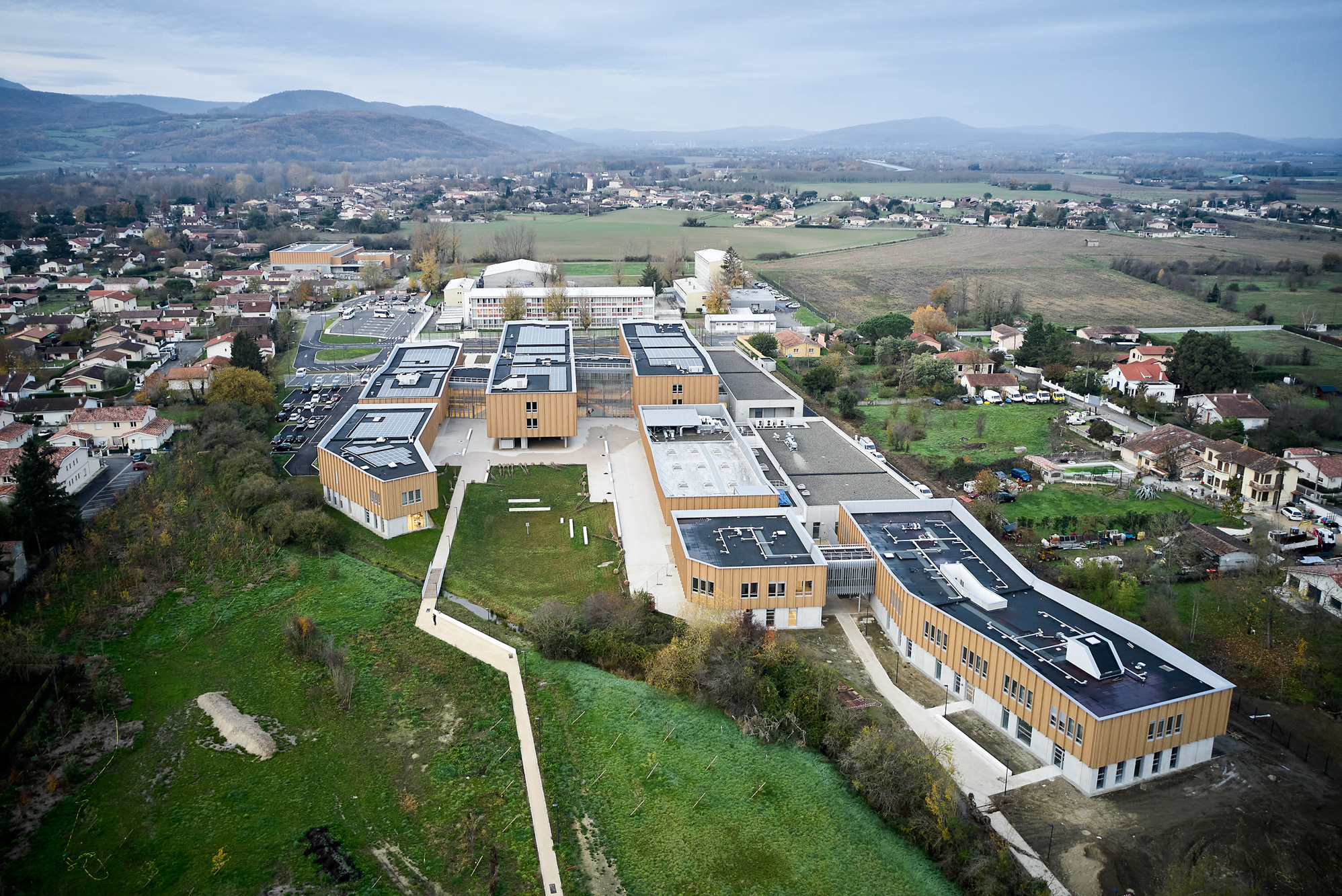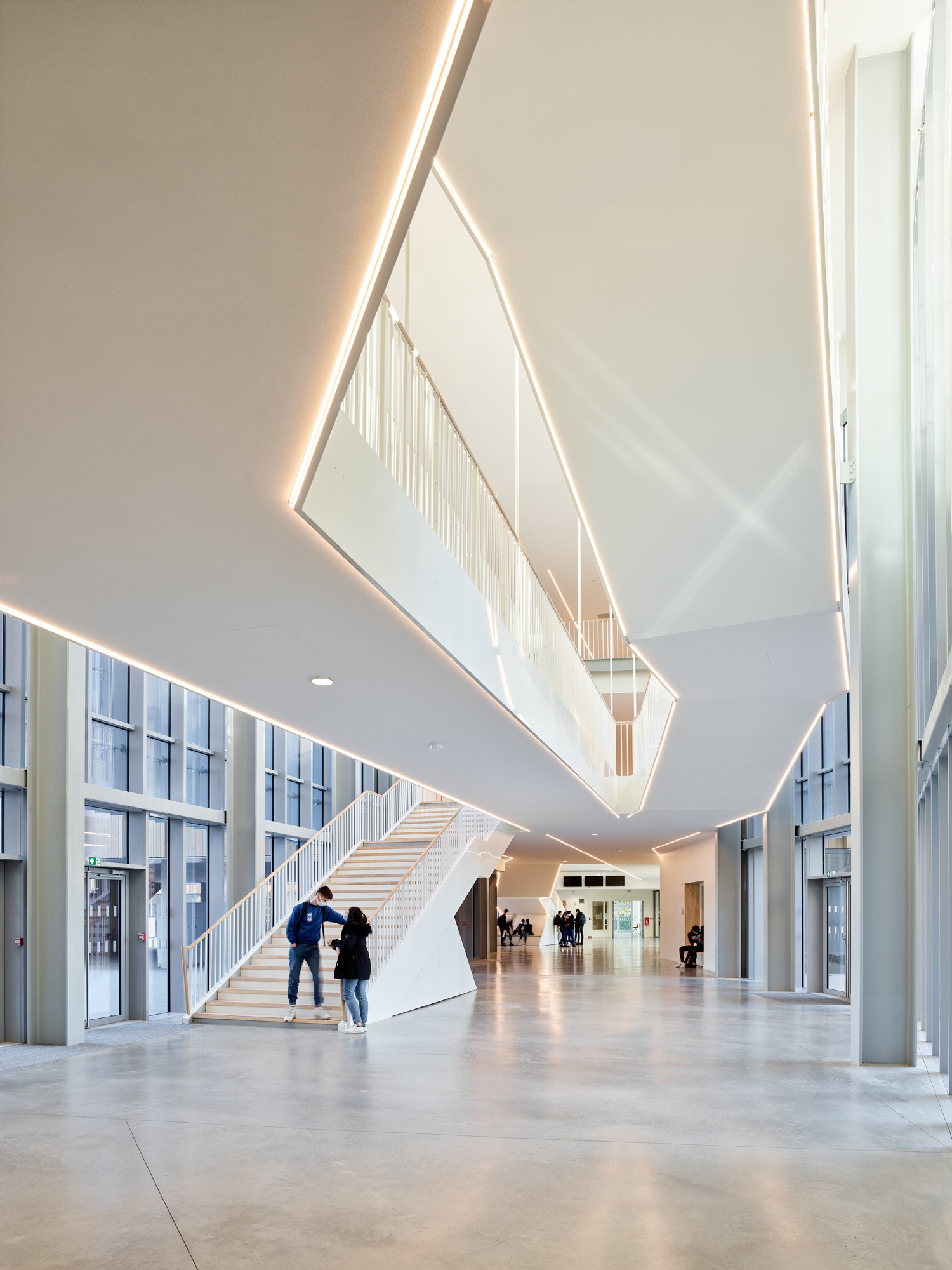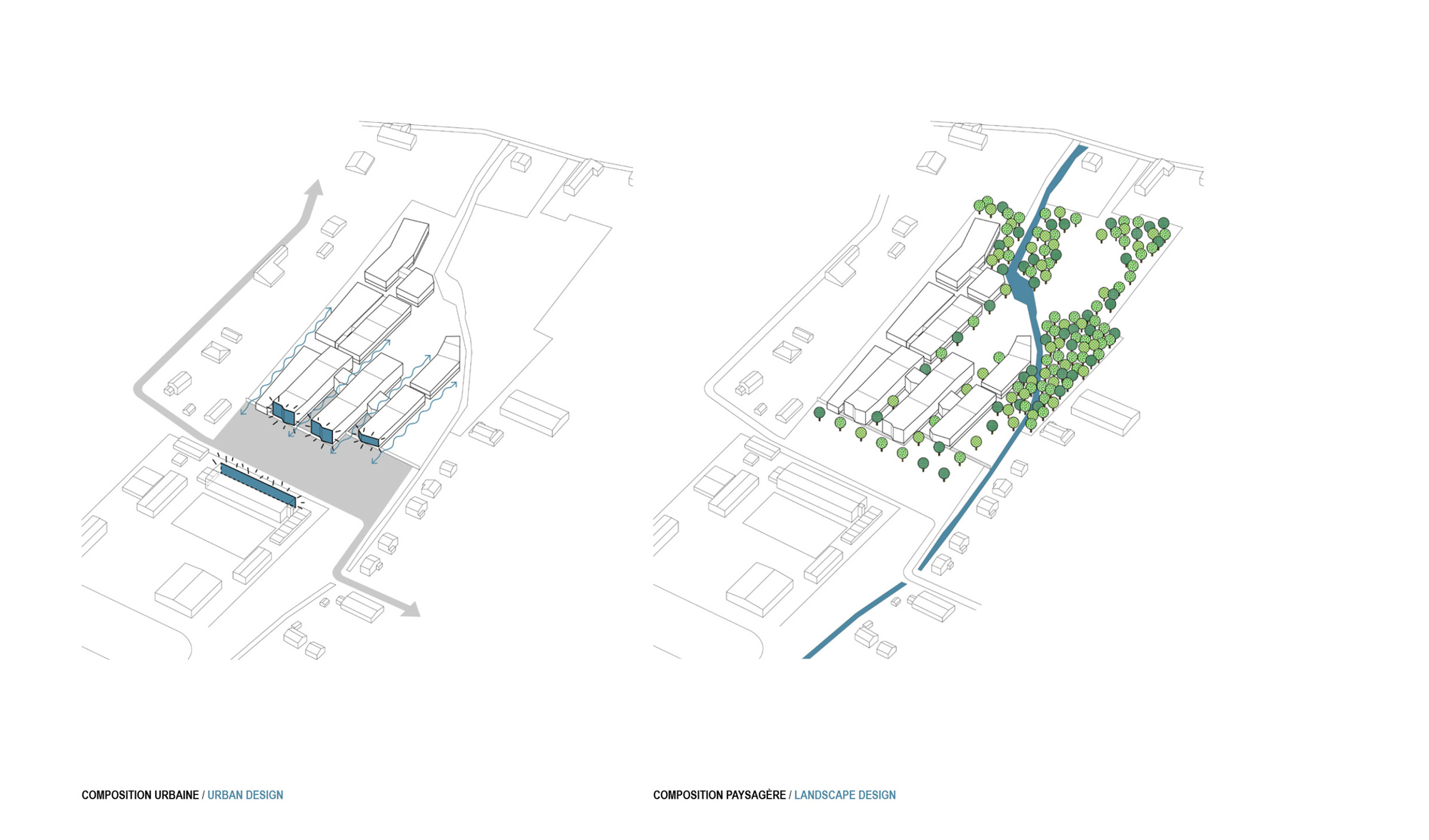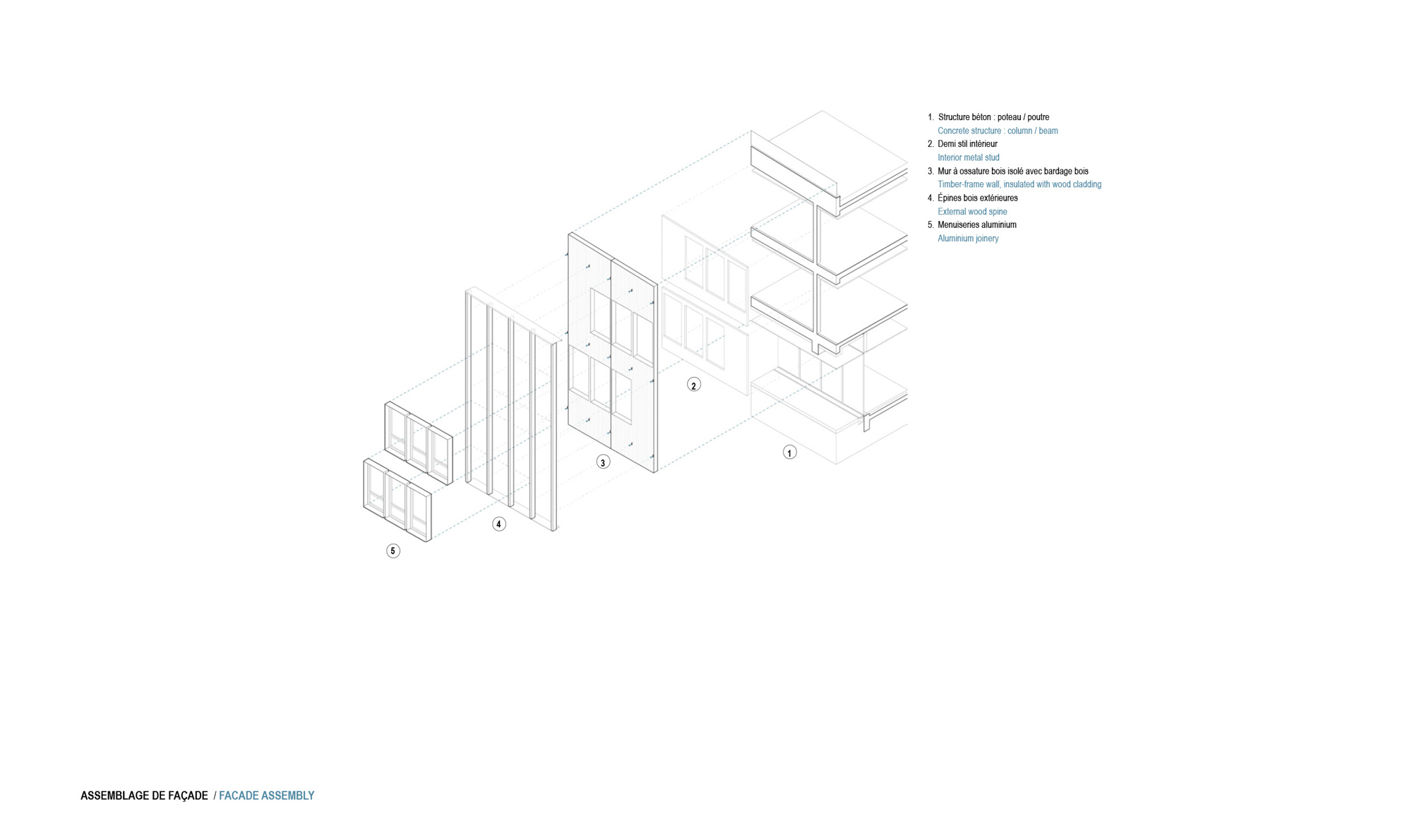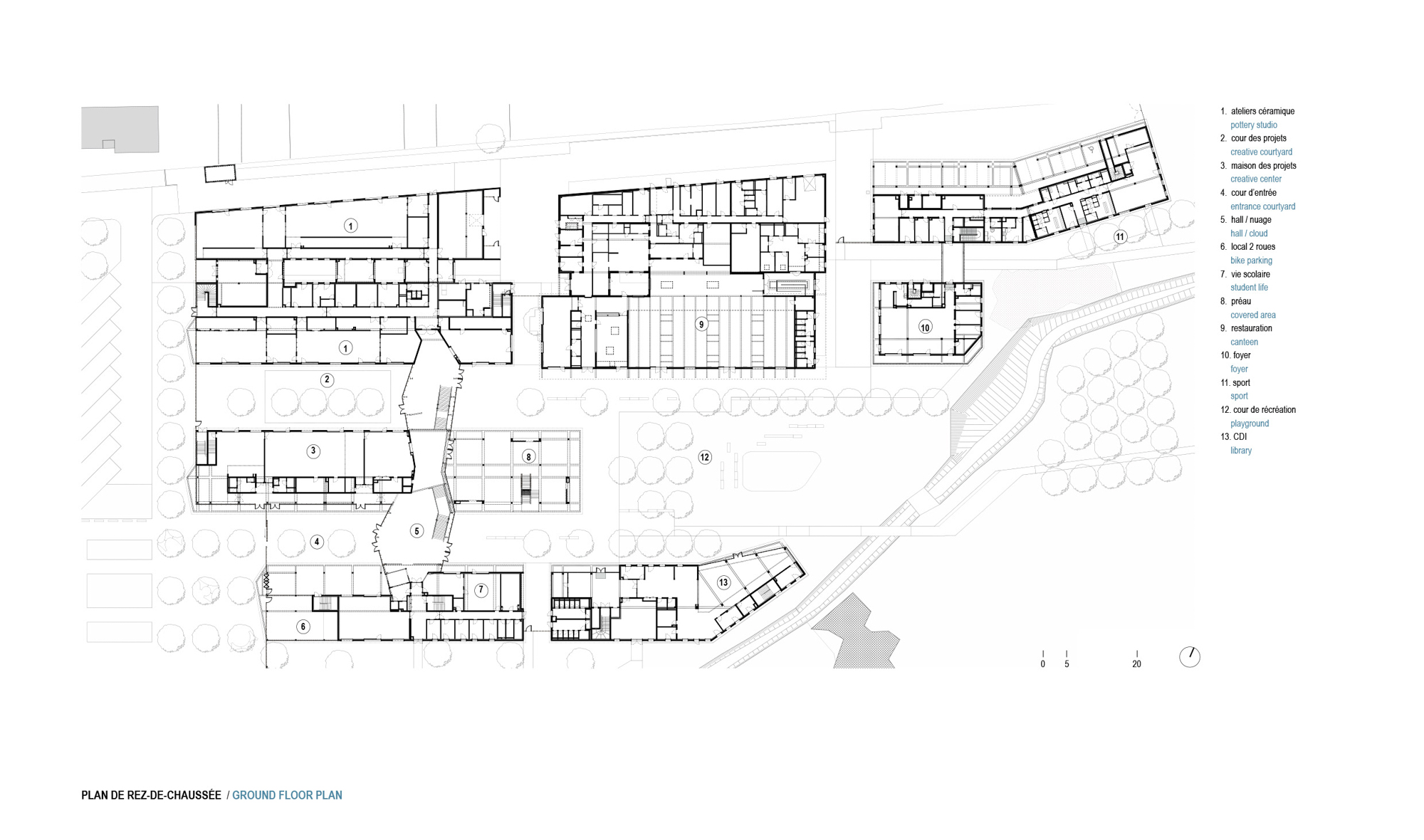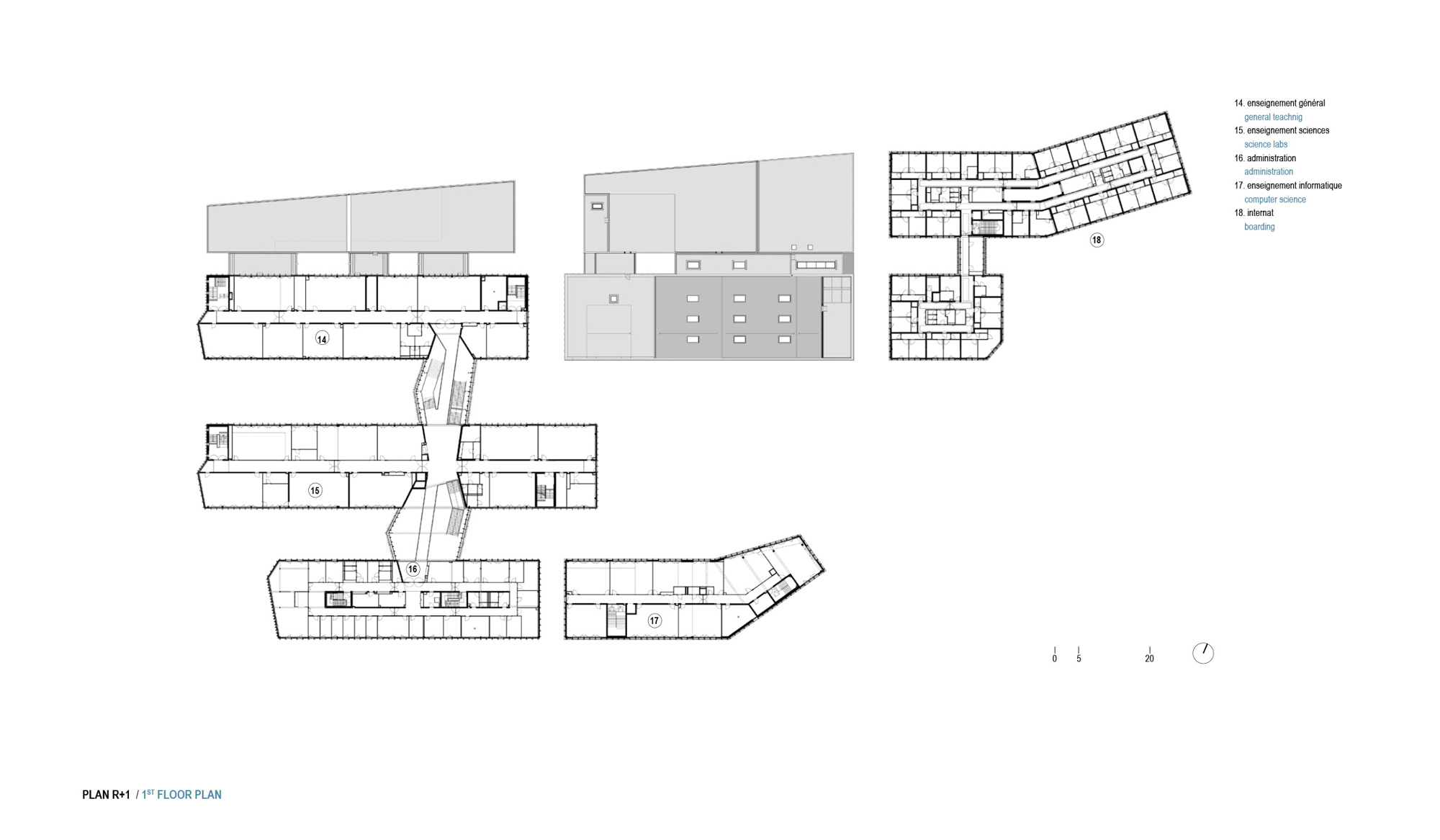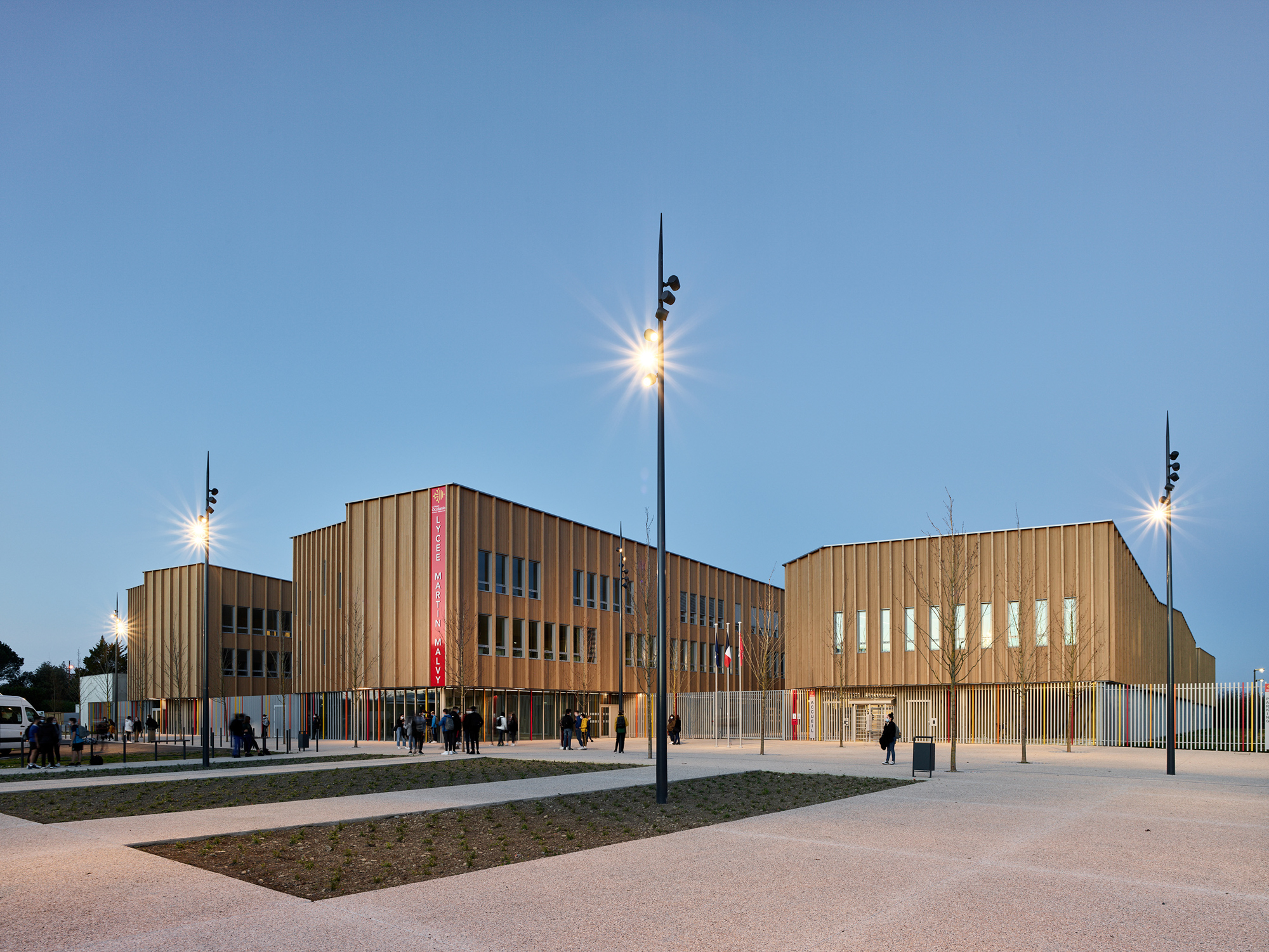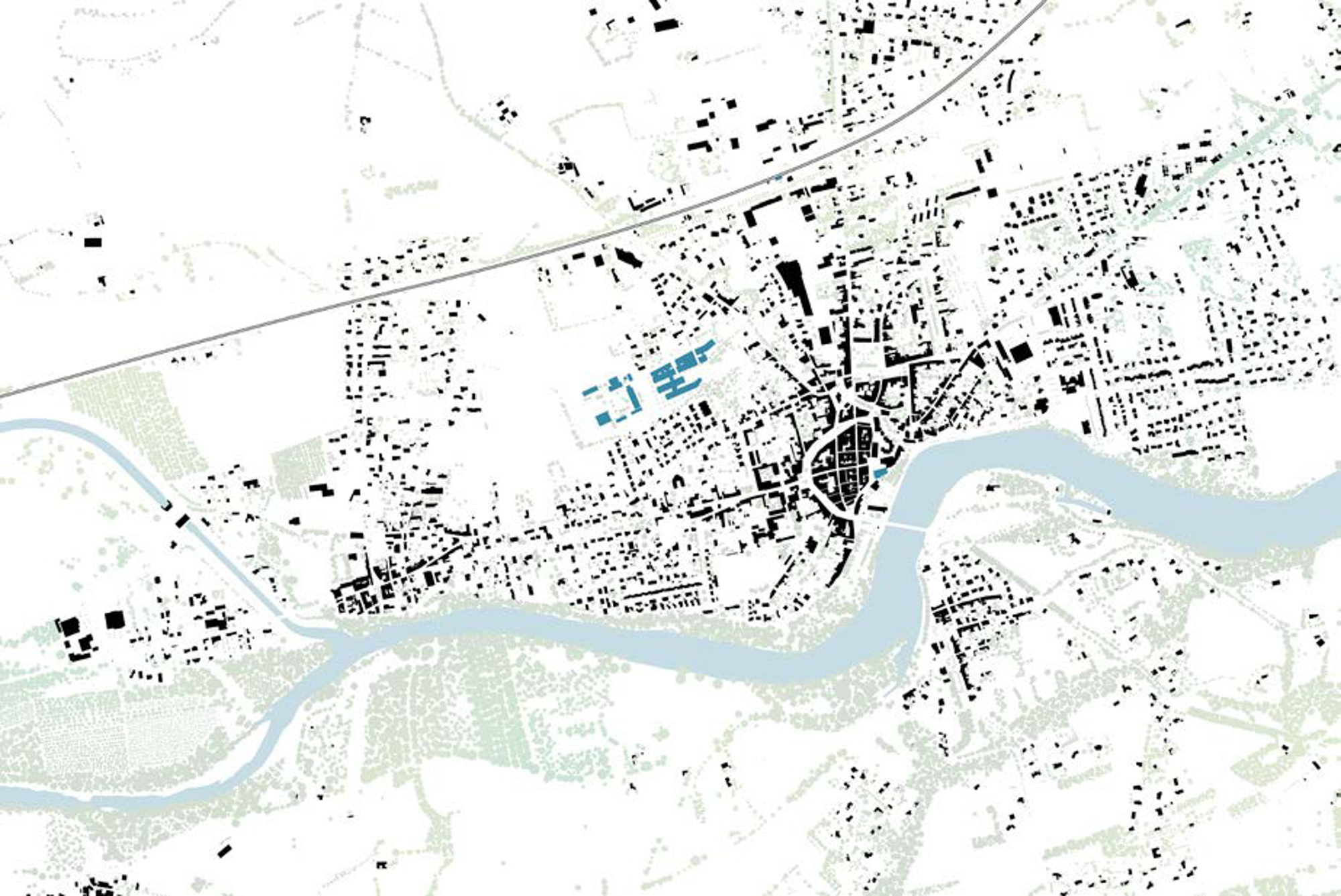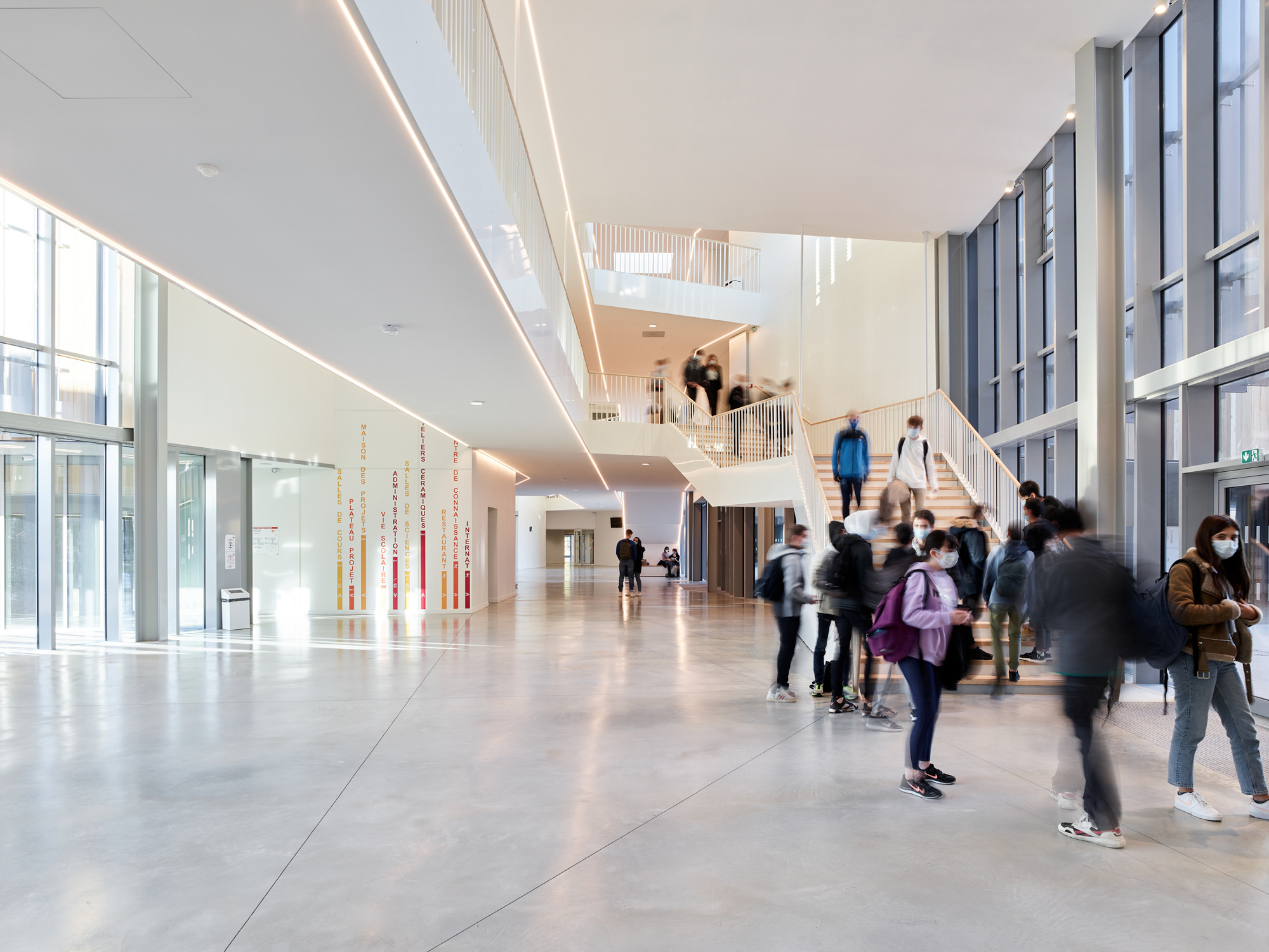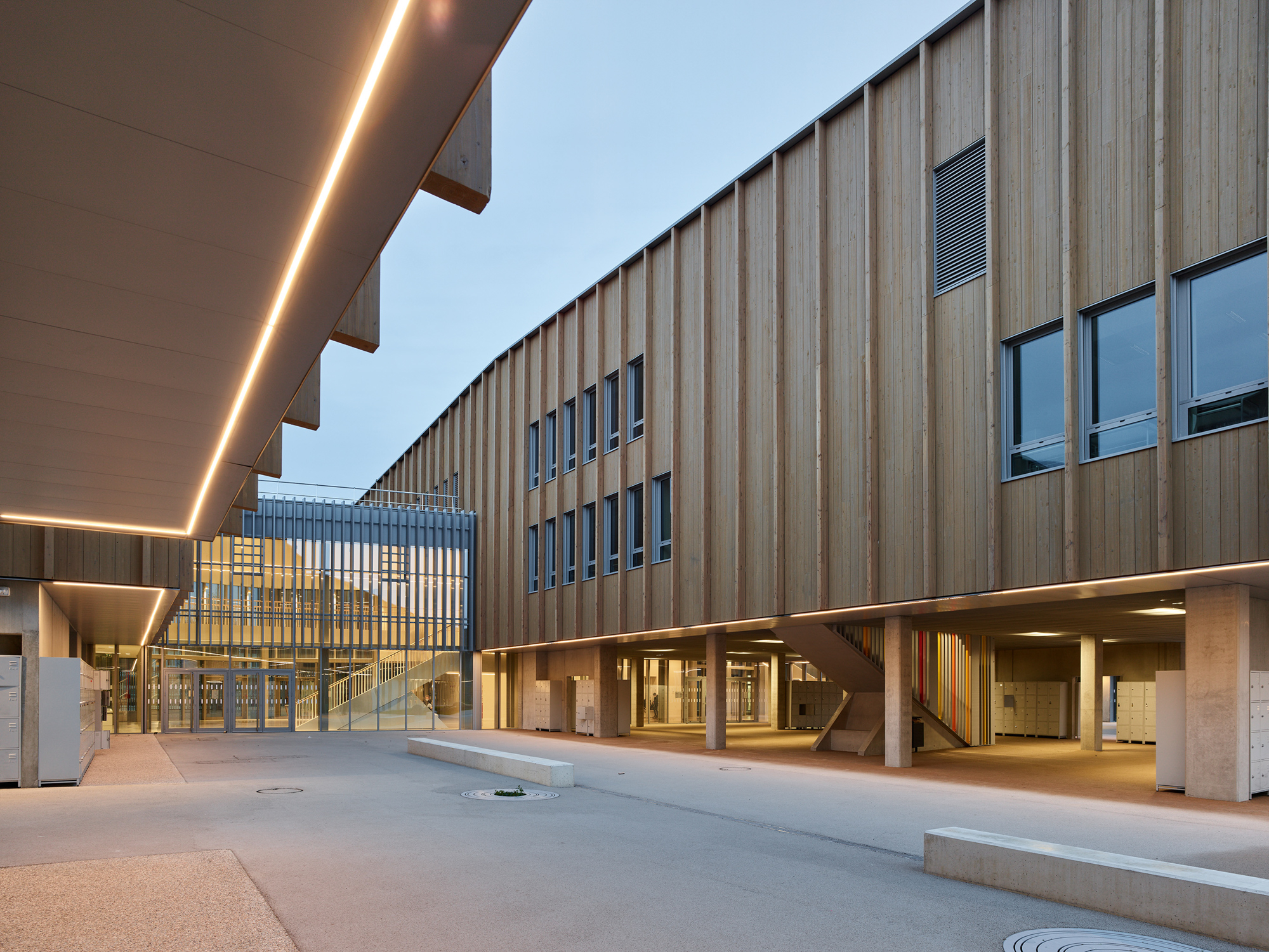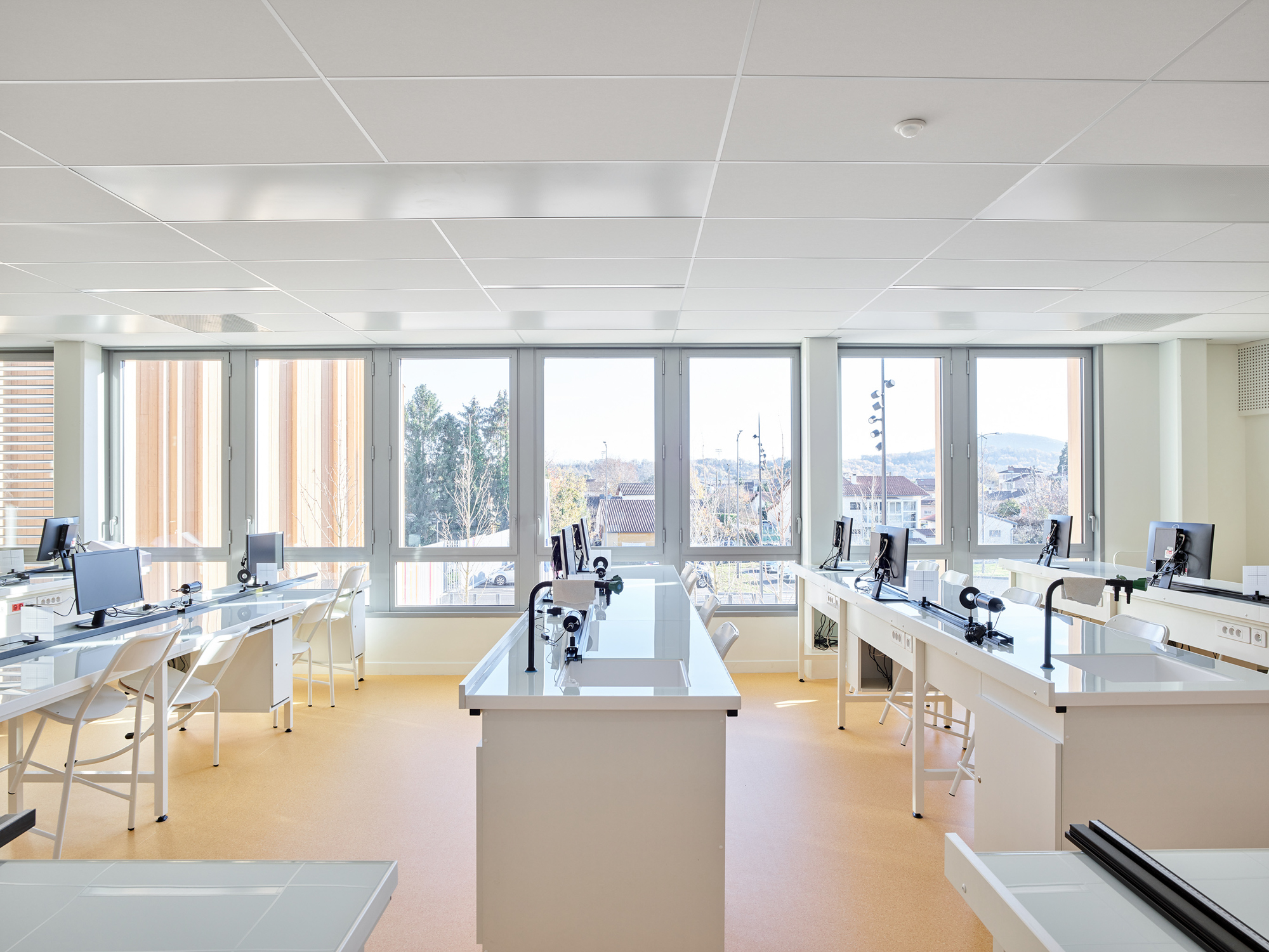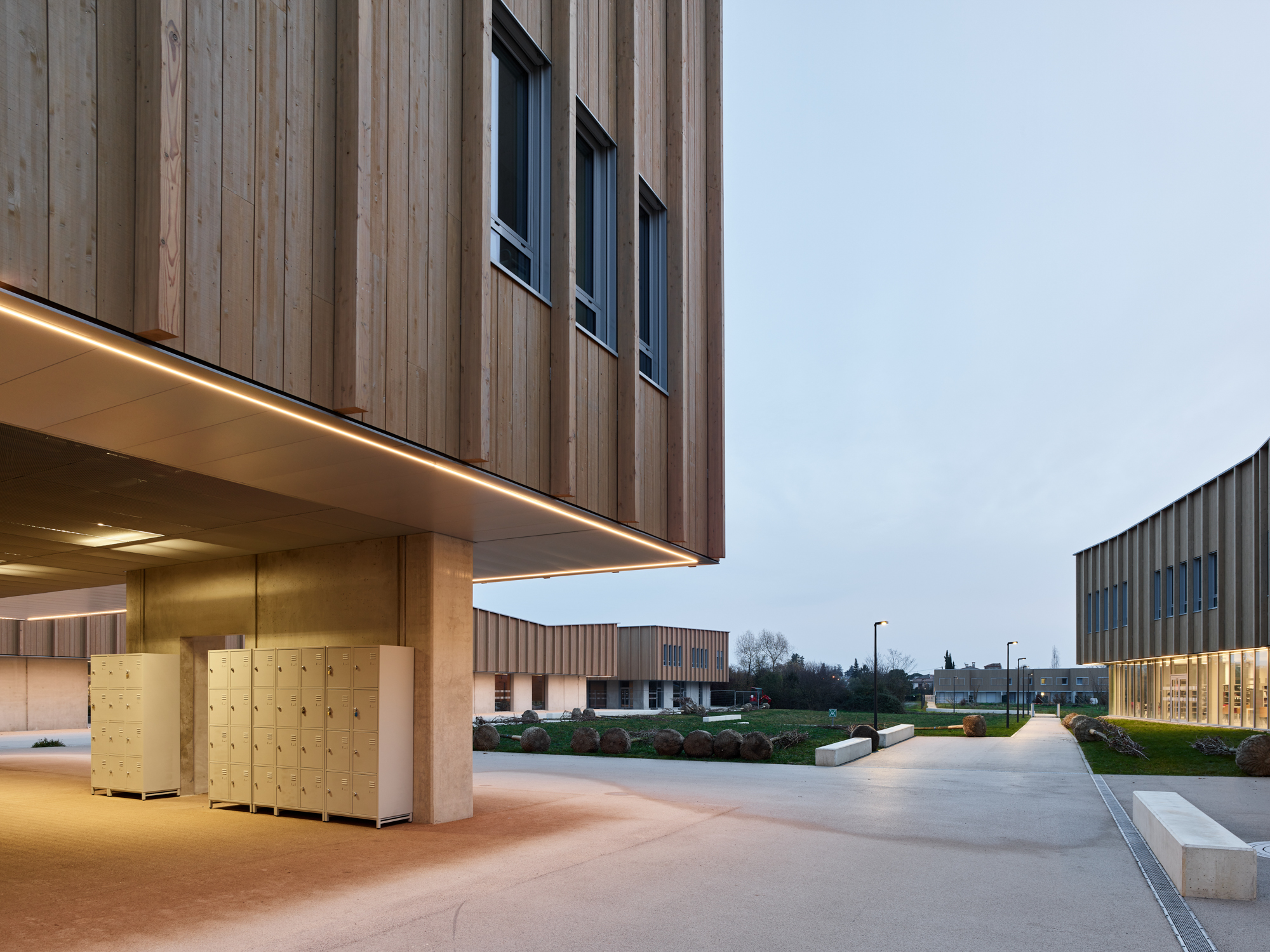Four finger principle
Secondary School in Cazères by Séquences Architecture

Foto: Kevin Dolmaire
Despite having only 5,000 inhabitants, Cazères – a small town in the foothills of the Pyrenees about 60 kilometres south of Toulouse – has been able to boast an academic secondary school for 1,100 students, including 100 in an associated boarding school, for some months now. Designed by Séquences Architecture and its partner architects Fontaine & Malvy, Lycée Martin Malvy is not only a mammoth project for the town but also points the way to the future. Featuring timber-hybrid construction and a largely self-sufficient heat supply enabled by geothermal pumps and 1,670 square metres of solar modules, the new-build takes a stand for climate-friendly construction and has earned the French Bepos-Effinergie label at the highest E4C1 rating.
Not that education has played a secondary role to date in Cazères anyway: some 600 metres from the downtown area, vis-à-vis the new school, the town already has the Plantaurel secondary school, complete with a transverse entrance building. This has been countered by the Lycée architects with a linear structure that groups volumes into four strips running in an east-west direction. The advantage of the concept is that the individual and relatively small blocks a mere two-to-three storeys in height fit in well with the surrounding landscape and the residential buildings on the outskirts of the town.
Open spaces are situated between the blocks; the nuage (cloud), a glass-walled element as a place of encounter, is set at right angles to these volumes. A fab lab, pottery workshops, a multi-purpose room and exhibition space – i.e. rooms for activities that the people of the town can take part in when school is over, are arranged in a highly public way behind the extensive glazing on each side of the main entrance.
Interior walls and the floor slabs in the complex were constructed in reinforced concrete, whereas the façades come in timber. Prefabricated timber panel elements, one- to two-storeys high according to the building concerned and provided aluminium windows, form the buildings’ thermal envelope, with pilaster strips of 100 x 200 millimetre-thick Douglas fir articulating the facades. According to the architects’ calculations, 19.5 kilograms of renewable resources per square metre of floor space went into construction of the Lycée.
Further Information:
Landscape Architecture: Stéphanie Bordone
Technical Building Equipment: F4 Ingenierie
BIM-Management: Keyros
